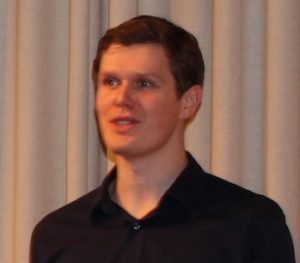At the group meeting on 13th January Dr David Harris-Birtill gave a talk about ongoing work creating an automated remote pulse oximeter.
Here’s an abstract about this work which was presented at a recent conference in India:
“A patient’s blood oxygen saturation and heart rate are crucial indicators for monitoring their wellbeing; standard practice is to use a finger clip pulse oximeter, creating practical constraints on when and how these measurements are taken. Using multispectral imaging cameras, oxygen saturation and heart rate can be measured remotely, and without contact sensors. However, these devices are both expensive and lack the ability to accurately locate the body within the image. This project addresses these problems, creating and testing a prototype for a reliable, low cost system using a widely available camera normally used to control a gaming device, providing both colour and co-registered infrared images. The camera images are then used for remote sensing of oxygen saturation and heart rate for up to six people simultaneously.
Face locations are identified in the colour (RGB) and infrared images, and the data from regions of interest inside each face are recorded. The spectral features can be used to calculate the blood oxygen saturation by dividing the infrared data, with laser wavelength of 858.75nm±0.5nm, by the red channel data. The temporal information from the reflectance intensity is used to measure the heart rate, by calculating the discrete Fourier transform of the image pixel intensity over time to obtain the frequency information. Optical reflectance spectroscopy measurements on the face show the spectral range with the highest heart rate accuracy as 450nm-600nm. The developed system will enable clinicians to monitor these metrics for many patients simultaneously through a single device, and without the need for physical contact.
There are numerous potential further applications outside conventional clinical environments, including routine or emergency self-assessment via video at home, at public events, sporting events, and in remote or inaccessible areas. The video could relay important diagnostic information in several emergent cardiorespiratory scenarios, including arrhythmias and impending respiratory failure.”


